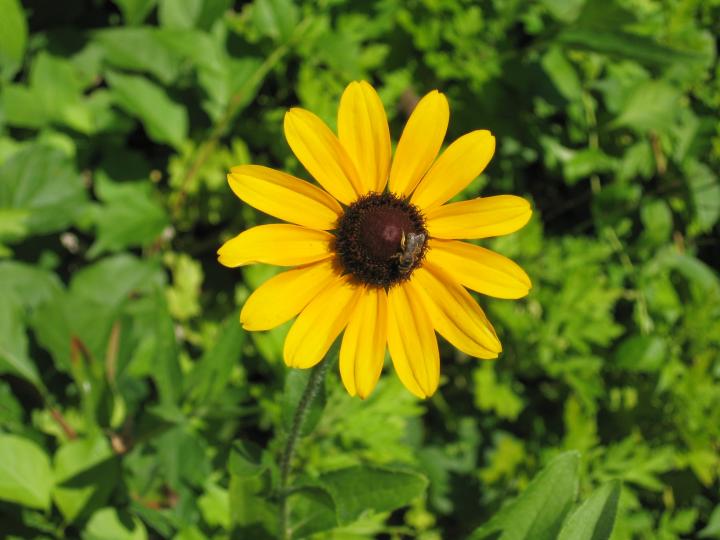






Black-Eyed Susan in our yard with a tiny bee on it.
Sue DayBlack-eyed Susans (Rudbeckia hirta) are native to North America and one of the most popular wildflowers grown. They tend to blanket open fields, often surprising the passer-by with their golden-yellow beauty.
Members of the sunflower family, the “black eye” is named for the dark brown-purple centers of its daisy-like flower heads. The plants can grow to over 3 feet tall, with leaves of 6 inches, stalks over 8 inches long and flower diameter of 2 to 3 inches.
Butterflies, bees and a variety of insects are attracted to the flowers for the nectar. As they drink the nectar, they move pollen from one plant to another, causing it to grow fruits and seeds that can move about easily with the wind.
These plants bloom from June to October. Note that they can be territorial in that they tend to squash out other flowers growing near them.
Black-eyed Susans are good for cut flowers; they also work well for borders or in containers.
After the first season, black-eyed susans can reseed themselves!
Black-eyed Susans are meant to symbolize justice. Find out more flower meanings here.
Astilbe: How to Plant, Grow, and Care for Astilbes
Cannas: How to Plant, Grow, and Care for Canna Flowers
Delphiniums: How to Plant, Grow, and Care for Delphinium Flowers
Gladiolus: How to Plant, Grow, and Care for Gladiolus
Irises: How to Plant, Grow, and Care for Iris Flowers
Nasturtium: How to Plant, Grow, and Care for Nasturiums
Marigolds: How to Plant, Grow, and Care for Marigold Flowers
Copyright © www.100flowers.win Botanic Garden All Rights Reserved